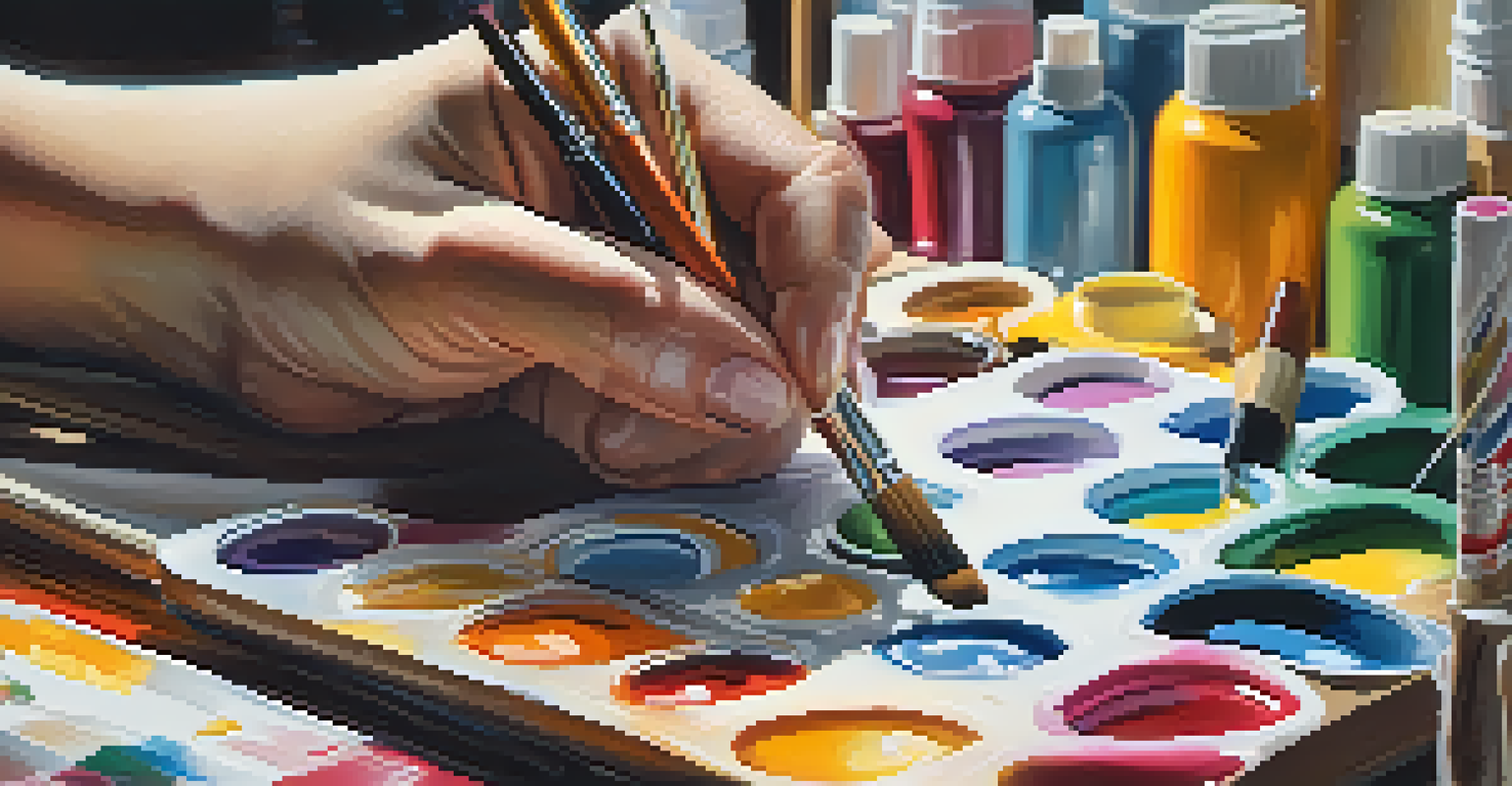The Future of Art Galleries in a Digitally Dominated World

The Shift to Digital: How Galleries Are Adapting
In today's world, art galleries are embracing digital platforms to reach wider audiences. This shift is not just a trend; it's a necessity as more people turn to online spaces for cultural experiences. By hosting virtual exhibitions and utilizing social media, galleries can showcase artwork beyond their physical walls.
Art is not what you see, but what you make others see.
For example, during the pandemic, many galleries successfully transitioned to virtual tours, allowing visitors to explore exhibits from the comfort of their homes. This approach not only maintained engagement but also introduced art to a demographic that may have never visited a gallery. The digital realm offers endless possibilities for innovative presentations.
As galleries adapt, they are finding new ways to create immersive experiences. With technologies like augmented reality (AR) and virtual reality (VR), visitors can interact with art in ways that were previously unimaginable. This evolution is reshaping how we think about the experience of viewing art.
The Role of Social Media in Art Promotion
Social media platforms like Instagram and TikTok have become vital tools for art promotion. These platforms allow artists and galleries to connect directly with audiences, fostering a sense of community. A single post can reach thousands, if not millions, of potential art lovers around the globe.

Consider how artists use Instagram stories to share their creative processes or behind-the-scenes glimpses of their work. This transparency not only builds a personal connection but also engages followers in the narrative of the artwork. Galleries that embrace this approach can attract a younger, digitally savvy audience.
Galleries Embrace Digital Platforms
Art galleries are leveraging digital tools like virtual exhibitions and social media to engage wider audiences and adapt to changing cultural consumption habits.
Moreover, social media can serve as a powerful sales tool. By showcasing artwork through visually appealing posts or live auctions, galleries can drive interest and sales without the constraints of physical locations. This shift represents a significant change in how art is marketed and sold.
Challenges of Digital Transition for Art Galleries
While the digital transition offers numerous benefits, it also presents challenges for traditional art galleries. One major concern is the potential loss of the personal touch that physical exhibitions provide. The atmosphere created by a gallery—its lighting, layout, and the ability to interact with art—can be hard to replicate online.
The best way to predict the future is to create it.
Additionally, there is the issue of accessibility. Not everyone has the same level of digital literacy or access to technology, potentially alienating certain demographics. Galleries must find ways to ensure that both online and offline experiences are inclusive and engaging.
Finally, the saturation of online content can make it difficult for individual galleries to stand out. With countless artists and exhibitions vying for attention, galleries need to develop unique digital strategies to capture and maintain interest. This requires creativity and adaptability in a fast-paced environment.
The Rise of Virtual Exhibitions and Online Sales
Virtual exhibitions have gained traction, allowing galleries to create engaging online experiences. These exhibitions often include interactive elements such as 360-degree views of artworks and artist interviews. Such features enhance the viewing experience and allow for deeper engagement with the art.
Online sales platforms have also emerged, enabling galleries to sell artwork directly to consumers. This direct-to-consumer model eliminates many traditional barriers, making art purchasing more accessible. As a result, galleries can tap into a wider market, driving revenue in ways that were previously unattainable.
Challenges of Going Digital
While transitioning online offers new opportunities, galleries face challenges such as maintaining personal connections and ensuring accessibility for all.
Moreover, these virtual sales can provide important data and insights about consumer preferences. Galleries can analyze trends and adjust their offerings accordingly, creating a more responsive and personalized experience for art buyers.
Embracing Technology: AI and Art Creation
Artificial intelligence (AI) is making waves in the art world, influencing both creation and curation. Artists are using AI tools to generate unique pieces, pushing the boundaries of creativity. This collaboration between human and machine challenges traditional notions of authorship and originality.
On the gallery side, AI can assist in curating exhibitions by analyzing visitor preferences and suggesting artworks that would resonate best with audiences. This data-driven approach can enhance visitor satisfaction and drive engagement at exhibitions.
However, the integration of AI also raises questions about the future of artistic expression. As technology continues to evolve, galleries must navigate the balance between innovation and the human touch that makes art so special.
The Importance of Community Engagement
In a digitally dominated world, fostering community engagement has never been more crucial for galleries. This means creating opportunities for dialogue between artists, curators, and audiences. Engaging with the community can enhance the cultural relevance of galleries and strengthen their role as social hubs.
Galleries can host online workshops, panel discussions, and Q&A sessions to build a sense of community around art. These events encourage participation and give audiences a platform to express their thoughts and feelings about the art presented.
Future: A Hybrid Model
The future of art galleries may involve a hybrid model that combines in-person and virtual experiences to cater to diverse audience preferences.
By prioritizing community engagement, galleries can cultivate loyal audiences who feel invested in their local art scene. This sense of belonging can translate into higher attendance, both online and offline, ensuring the sustainability of galleries in the long run.
The Future of Art Galleries: A Hybrid Model
As we look ahead, the future of art galleries may lie in a hybrid model that combines physical and digital experiences. This approach allows galleries to benefit from the best of both worlds, maintaining personal connections while reaching global audiences. It provides flexibility and caters to diverse preferences among art lovers.
For instance, galleries could host in-person exhibitions while simultaneously offering virtual tours for those unable to attend in person. This ensures inclusivity and broadens accessibility, allowing everyone to engage with art on their terms.

Ultimately, the evolution of art galleries will depend on their ability to adapt to changing technologies and audience needs. By embracing innovation while respecting the essence of art, galleries can thrive in this new digital landscape.